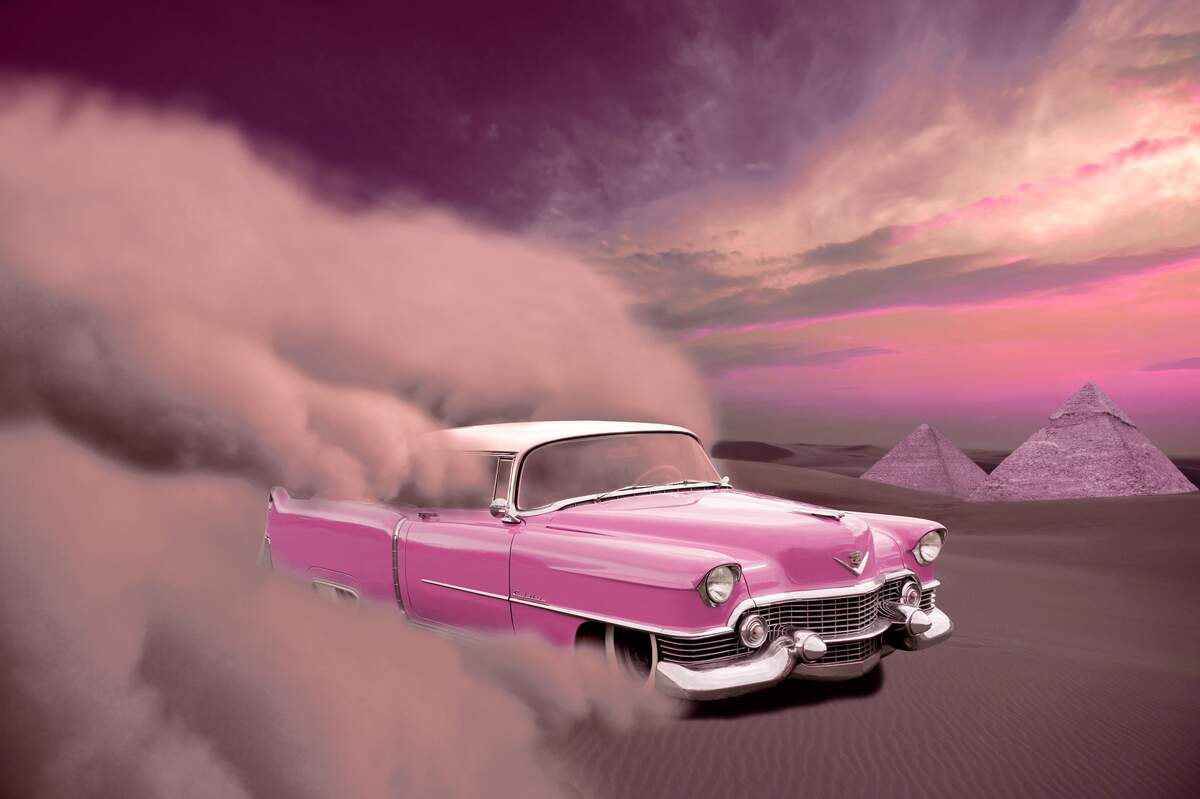

National Pink Day
Some may say that pink is for girls and blue is for boys, but both the history of the color pink and how it is perceived today are much more complex and varied than that. Pink, which is celebrated today, is a pale color that falls somewhere between red and bluish-red, usually somewhere between red and magenta. Some shades, like the color salmon, are even orangish. The color was referenced in literature in ancient times, but its name dates to the seventeenth century when it was named for a flower that has the name.
The perception of pink in society has changed over the years. It has long been associated with femininity, and at times has been considered kitsch, erotic, sophisticated, or transgressive. It has also been associated with sweetness, tenderness, charm, sensitivity, childhood, and romance. When paired with white it has signified chastity and innocence, and when coupled with black it has conveyed eroticism and seduction.
During the Middle Ages, pink was used primarily in women's fashion and in religious art, while during the Renaissance, it was used mainly for flesh color in paintings. Its rise in popularity in the West took place in the mid-eighteenth century. During that time, men and women wore faint, powdery pieces of pink clothing as a status symbol of luxury and class. Both male and female infants and children were dressed in the color—it was often more associated with males because it was seen as a lighter shade of red, which was a color viewed as masculine. Boys continued to wear pink well into the nineteenth century, including pink ribbons and decorations. Eighteenth-century paintings gave contrasting meanings of pink. Some depicted the color as being associated with childhood, innocence, or tenderness, while others showed it as a color of seduction.
In the mid-nineteenth century, pink shifted away from masculinity and was viewed as being delicate. One reason for this was that men started wearing darker colors, and women consequently began wearing and being associated with brighter, pastel colors. Eroticism began being associated with pink during this century as well because the color had a quality similar to nakedness. Lingerie began appearing in pink, and art and literature began referencing the color's sexual quality, particularly the color's relation to the female body.
The color had long been related to the higher classes of society, but during the twentieth century, there was a status shift that moved it from luxury to the working-class. This was on account of the proliferation of cheap dyes that allowed the creation of garish takes on the color. The hues became brighter and bolder, and the dyes didn't easily fade. It was at this time pink entered what is viewed as the vulgar, being associated with prostitutes. But the connotation of luxury was not fully removed from the color. For example, during the first decades of the century, Paul Poiret, a French couturier, made exquisite dresses in shades of pink.
In the 1950s, the color became strongly associated with femininity, largely on account of Postwar branding and marketing. This is the era when pink became associated with girls and blue became associated with boys. A few happenings during the decade helped to push pink further into this direction. Mamie Eisenhower, the wife of President Dwight D. Eisenhower, wore a pink dress for her inaugural gown in 1953, and Audrey Hepburn's 1957 film Funny Face featured many women wearing pink dresses. The color was often still seen as being frivolous at the time, which reflected a less-than-equal view of women that persisted during these pre-women's liberation years.
When Jacqueline Kennedy and Marilyn Monroe began wearing it in the early 1960s, it once again was viewed as being luxurious. It was adopted by punk, pop, and hip-hop culture in the following decades. Pink triangles became a symbol of gay activism in the 1970s when they were claimed by gay activists and removed from their dreadful past when they were used by Nazis to identify homosexuals in concentration camps. In general, the color pink is now associated with the LGBTQ community.
In recent years, the color has also been used by women in the West as a symbol of feminist power and protest, where sexual, reproductive, and social rights are addressed. Pink pussyhats were worn at the 2017 Women's March in Washington, D.C., on the day after the inauguration of President Donald Trump. Similarly, Code Pink is a women's activist group that opposes war and globalization. The pink of the twenty-first century is both pretty and powerful, both feminine and feminist. Men in the West have even been embracing the color more in recent years. Still, the color is generally more accepted n the East. For example, in India, pink clothes, adornments, and turbans are commonly worn by both sexes.
The color is associated with Breast Cancer Awareness Month, during which Metastatic Breast Cancer Awareness Day takes place. A pink ribbon is the symbol of breast cancer awareness. Other holidays such as Pink Cadillac Day and Pink Flamingo Day—which happens to take place today—celebrate with the color.
Pink can be seen almost everywhere you look. It is used in idioms and phrases such as "give a pink slip" and "tickled pink"; flowers bloom bearing its color; many foods and drinks sparkle with it; clothes and makeup are shaded with its hue; and even the rising and setting of the sun greet us and wave to us with shades of pink. No matter where pink is found, we celebrate it today!
How to Observe National Pink Day
Here are some ideas on how to spend the day:
- Wear some pink clothes, a pink hat, or some pink shoes.
- Buy something that is pink.
- Wear pink lipstick or blush, or dye your hair pink.
- Eat some pink colored food, such as watermelon, peeps, rhubarb, salmon, shrimp, grapefruit, ham, or cotton candy.
- Drink some pink colored beverages such as a strawberry shake or pink lemonade. Some cocktail options include the Pink Lady and the Pink Squirrel.
- Listen to a song or watch a film with "pink" in the title.
- Celebrate Pink Flamingo Day, which also takes place today.
- Have a party and incorporate as many pink things as possible, including pink decorations, food, and clothes.
- Plant, pick, or buy some pink flowers, such as roses, hibiscuses, tulips, peonies, or hyacinths.
- Look for a pinkish light from the sun early in the morning or in the evening before it goes down.
- Read a book about the color pink, such as Pink: The History of a Punk, Pretty, Powerful Color by Valerie Steele.





















